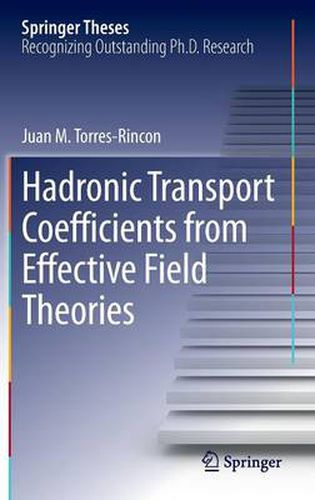Readings Newsletter
Become a Readings Member to make your shopping experience even easier.
Sign in or sign up for free!
You’re not far away from qualifying for FREE standard shipping within Australia
You’ve qualified for FREE standard shipping within Australia
The cart is loading…






This title is printed to order. This book may have been self-published. If so, we cannot guarantee the quality of the content. In the main most books will have gone through the editing process however some may not. We therefore suggest that you be aware of this before ordering this book. If in doubt check either the author or publisher’s details as we are unable to accept any returns unless they are faulty. Please contact us if you have any questions.
This dissertation focuses on the calculation of transport coefficients in the matter created in a relativistic heavy-ion collision after chemical freeze-out. This matter can be well approximated using a pion gas out of equilibrium. We describe the theoretical framework needed to obtain the shear and bulk viscosities, the thermal and electrical conductivities and the flavor diffusion coefficients of a meson gas at low temperatures. To describe the interactions of the degrees of freedom, we use effective field theories with chiral and heavy quark symmetries. We subsequently introduce the unitarization methods in order to obtain a scattering amplitude that satisfies the unitarity condition exactly, then go on to calculate the transport properties of the low-temperature phase of quantum chromodynamics - the hadronic medium - which can be used in hydrodynamic simulations of a relativistic heavy-ion collision and its subsequent evolution. We show that the shear viscosity over entropy density exhibits a minimum in a phase transition by studying this coefficient in atomic Argon (around the liquid-gas phase transition) and in the linear sigma model in the limit of a large number of scalar fields (which presents a chiral phase transition). Finally, we provide an experimental method for estimating the bulk viscosity in relativistic heavy-ion collisions by performing correlations of the fluctuating components of the stress-energy tensor.
$9.00 standard shipping within Australia
FREE standard shipping within Australia for orders over $100.00
Express & International shipping calculated at checkout
This title is printed to order. This book may have been self-published. If so, we cannot guarantee the quality of the content. In the main most books will have gone through the editing process however some may not. We therefore suggest that you be aware of this before ordering this book. If in doubt check either the author or publisher’s details as we are unable to accept any returns unless they are faulty. Please contact us if you have any questions.
This dissertation focuses on the calculation of transport coefficients in the matter created in a relativistic heavy-ion collision after chemical freeze-out. This matter can be well approximated using a pion gas out of equilibrium. We describe the theoretical framework needed to obtain the shear and bulk viscosities, the thermal and electrical conductivities and the flavor diffusion coefficients of a meson gas at low temperatures. To describe the interactions of the degrees of freedom, we use effective field theories with chiral and heavy quark symmetries. We subsequently introduce the unitarization methods in order to obtain a scattering amplitude that satisfies the unitarity condition exactly, then go on to calculate the transport properties of the low-temperature phase of quantum chromodynamics - the hadronic medium - which can be used in hydrodynamic simulations of a relativistic heavy-ion collision and its subsequent evolution. We show that the shear viscosity over entropy density exhibits a minimum in a phase transition by studying this coefficient in atomic Argon (around the liquid-gas phase transition) and in the linear sigma model in the limit of a large number of scalar fields (which presents a chiral phase transition). Finally, we provide an experimental method for estimating the bulk viscosity in relativistic heavy-ion collisions by performing correlations of the fluctuating components of the stress-energy tensor.